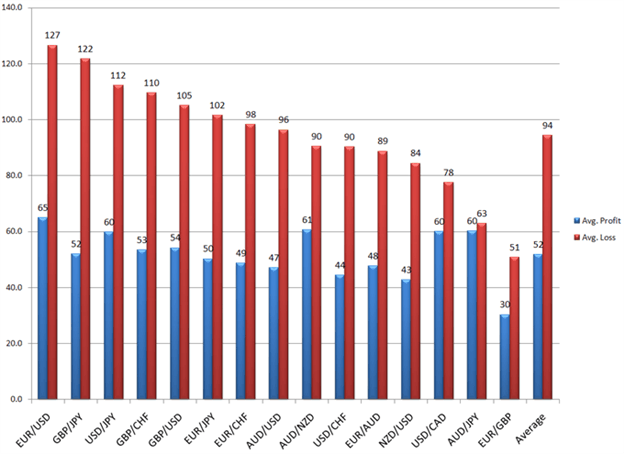Talking Points:
- Traders should plan their approach, strategies, and risk management before ever placing a trade.
- Risk management protocols should be determined before the entry.
- Trading journals and logs can allow traders to track their progress more efficiently.
Trading isn’t easy… well, I should clarify that. Placing a trade is simple; it’s just a couple of clicks of the mouse and boom: You’re in the trade. But trading profitably isn’t easy, and for most of us that’s the sole and primary reason that we’re in markets in the first place.
In one of the greatest trading books ever penned, Market Wizards, Jack Schwager interviews one of the best traders (and deeper thinkers) of the modern era, Mr. Ed Seykota. In the interview, Seykota offers an eye-opening quote:
“Win or Lose, everybody gets what they want out of the market. Some people seem to like to lose, so they win by losing money.”
While it may initially sound difficult to imagine the trader that likes to lose, think about this for a moment. Trading can be fun, exciting, and potentially profitable; but rarely is it all three at once.
To prioritize profitability is to do all of the little things that so many new traders avoid doing, for whatever reason. In this article, we’re going to address the top three of these, along with showing you how to address each.
The Trading Plan
I’ll be the first to admit, creating a trading plan (and further forcing one’s self to adhere to said plan), is not an exercise in excitement. It’s boring, it can be frustrating, and retaining the discipline to actually adhere to the plan is not easy.
Most new traders will draw up a plan, only to discard it in the next couple of days because something about the plan ‘doesn’t feel right.’
Gut instincts and reactions are probably the most costly risks faced by traders. As humans, we’ve evolved to follow these instincts to keep us out of danger; but modern-day markets are not the Darwinian environment for which your survival instincts are honed. Quite frankly, markets can be dangerous but they’re far from predictable which is what can make reactions such a risky concept.
Think about this for a moment: Markets are unpredictable, and that much is a given. Any trade is, at-best, a simple hypothesis or a probability. How would your gut-instinct be able to predict the future or make any one trade more than a simple probability?
Traders need to build, and adhere to a well-thought out plan-of-attack when approaching a market. This functions like a trader’s constitution to ensure that any position taken on falls within a criteria with which the trader has decided they’d like to speculate. It also helps to eliminate the ‘gut instinct’ reactions that can inevitably cost the trader so much money.
There are many different ways to go about creating a trading plan. The article ‘How to Build a Four-Point Trading Plan,’ offers a simple template with which traders can begin creating their own plan. The article ‘The Four-Hour Trader, a Full Trading Plan,’ offers a sample of a plan created for the swing-trader. And more lengthy and descriptive, the article ‘The Trader’s Plan,’ offers a template for a more detailed arrangement.
Manage Your Risk Before Your Risk Manages You
The biggest disconnect for most new traders is the conceptualization of risk management. Most traders that come to markets think that you have to have amazingly high winning percentages to be a profitable trader.
This couldn’t be further from the truth.
Not only is having a high ‘hit rate (percentage of profitable trades v/s losing trades),’ difficult; given that markets are unpredictable it’s likely unsustainable.
This topic was investigated in-depth in the article series, The Traits of Successful Traders. In the research, The Number One Mistake Forex Traders Make was found to be inadequate risk-reward ratios. In many cases, such as GBPJPY in the below chart, traders were losing more than $2 on losing positions for every $1 generated on winning positions.

Taken from The Number One Mistake Forex Traders Make, by David Rodriguez
This type of money management is an exercise in futility. Traders would need to be right about 75% of the time to be able to squeak by with a profit; and even then – the risk of slippage or gaps can drain that minimal profit to give the 75% hit rate trader a negative profit line.
Sure, it feels good to close a winning position; even if it’s a small win. But just as Ed Seykota said in The Market Wizards interview: Everybody in markets gets what they want.
If you want to feel good, ok – taking small wins might help you accomplish that.
But if you want to work towards profitability, you’d likely be best suited to follow the advice of some of the best professional traders in the world; advice echoed in The Number One Mistake Forex Traders Make, and look to manage your risk before it manages you.
Traders should look for a minimum risk-reward ratio of 1:1; and are likely best suited looking for even more aggressive risk-reward ratios of 1-to-2 or better.
Track Your Results
An old quote from Yogi Berra goes like this: ‘You’ve got to be very careful if you don’t know where you’re going because you might not get there.’
Analyzing one’s progress when trading can be boiled down to a very simple denominator: How profitable have you been?
But to the trader that hasn’t yet been profitable, this can be extremely difficult to analyze because they don’t know the behaviors that are needed to find that profitability.
Keeping a trading journal, and a trading log can be hugely helpful in tracking that progress. It allows for the trader to utilize critical analysis to see what has, or hasn’t worked for them in the past.
In the journal, write down the ‘reason’ for taking each trade, along with your plan for that position. Where are you going to look to exit, or move your stop, or scale into or out-of the position.
When the trade closes, go back and note how the position performed.
The trading log is simpler, and can be done on any spreadsheet software. This is simply you marking each position taken along with initial risk amount, and profit targets; and when the trade closes record the gain or loss.
In time and with enough positions, this can allow you to calculate your winning percentage, you’re average size of win, and average size of loss along with a flurry of other statistical data points.
With this, you can then begin noticing trends or deficiencies that could amount to improvement in the trading plan.
In conclusion
All-in-all, the three things mentioned above aren’t necessarily fun. But – you have to decide why you’re in markets in the first place.
If you’re here to have fun, you should get comfortable with losing. But, if you want to be profitable, you have to prioritize what’s really important, and what should be secondary (like having fun).
In the long run, many professional traders have found being profitable (if not less exciting) is a heck of a lot more fun than continuing to lose money.
--- Written by James Stanley
James is available on Twitter @JStanleyFX
Would you like to enhance your FX Education? DailyFX has recently launched DailyFX University; which is completely free to any and all traders!
We’ve recently begun to record a series of Forex Videos on a variety of topics. We’d greatly appreciate any feedback or input you might be able to offer on these Forex videos:




